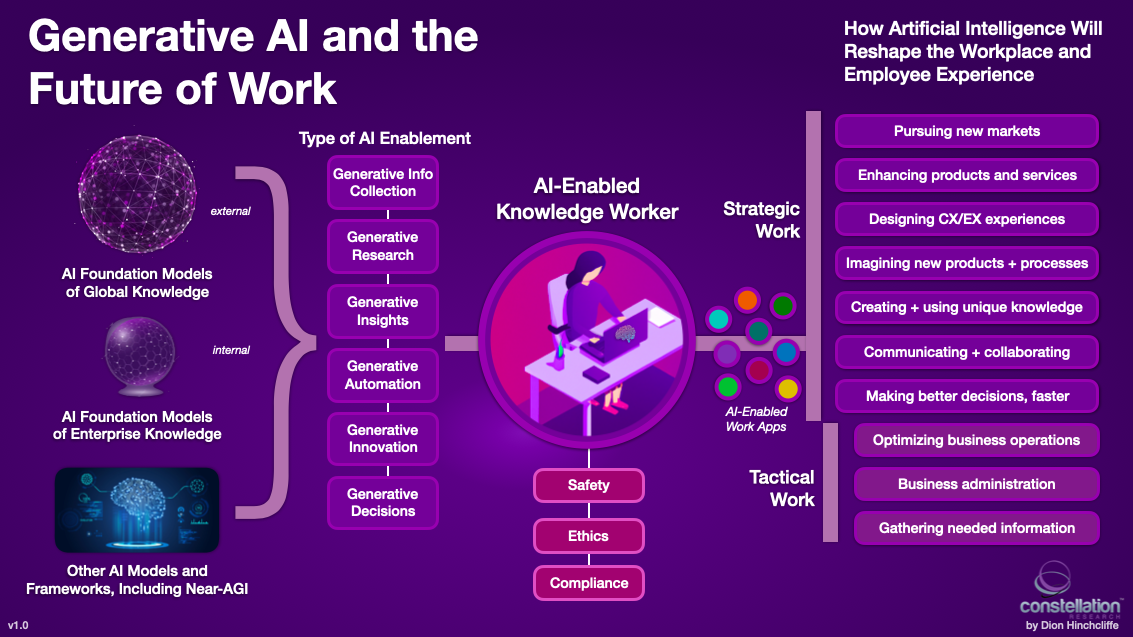Featured
That's why so numerous are carrying out dynamic and smart conversational AI models that consumers can interact with through message or speech. In enhancement to client solution, AI chatbots can supplement marketing efforts and support interior interactions.
Many AI companies that educate large models to create message, photos, video, and audio have not been transparent about the web content of their training datasets. Different leakages and experiments have revealed that those datasets include copyrighted material such as publications, paper write-ups, and flicks. A number of legal actions are underway to determine whether use copyrighted product for training AI systems makes up fair usage, or whether the AI companies need to pay the copyright owners for usage of their material. And there are naturally numerous classifications of negative stuff it might theoretically be made use of for. Generative AI can be utilized for individualized rip-offs and phishing attacks: For instance, utilizing "voice cloning," scammers can duplicate the voice of a specific person and call the individual's household with a plea for aid (and money).

(On The Other Hand, as IEEE Range reported this week, the united state Federal Communications Commission has reacted by disallowing AI-generated robocalls.) Photo- and video-generating tools can be used to produce nonconsensual porn, although the tools made by mainstream business prohibit such use. And chatbots can in theory stroll a potential terrorist with the steps of making a bomb, nerve gas, and a host of various other scaries.
What's more, "uncensored" variations of open-source LLMs are out there. In spite of such possible problems, many individuals think that generative AI can likewise make individuals extra effective and could be utilized as a tool to enable totally new types of imagination. We'll likely see both disasters and innovative flowerings and lots else that we don't expect.
Find out more concerning the math of diffusion versions in this blog post.: VAEs consist of 2 semantic networks usually referred to as the encoder and decoder. When provided an input, an encoder converts it right into a smaller sized, more thick depiction of the data. This compressed depiction protects the details that's required for a decoder to reconstruct the original input information, while disposing of any pointless info.
Autonomous Vehicles
This allows the individual to easily sample brand-new concealed representations that can be mapped with the decoder to generate novel information. While VAEs can produce results such as pictures quicker, the pictures created by them are not as detailed as those of diffusion models.: Found in 2014, GANs were considered to be the most commonly utilized methodology of the three before the recent success of diffusion designs.
Both designs are educated with each other and get smarter as the generator produces much better material and the discriminator improves at identifying the created material. This procedure repeats, pushing both to consistently improve after every version until the produced content is tantamount from the existing material (AI in retail). While GANs can offer high-grade examples and produce outcomes quickly, the sample diversity is weak, consequently making GANs much better suited for domain-specific information generation
: Comparable to persistent neural networks, transformers are designed to process consecutive input information non-sequentially. Two devices make transformers specifically experienced for text-based generative AI applications: self-attention and positional encodings.
Generative AI starts with a structure modela deep understanding design that acts as the basis for several various sorts of generative AI applications - How does deep learning differ from AI?. The most common foundation versions today are huge language models (LLMs), developed for text generation applications, however there are additionally structure designs for picture generation, video generation, and noise and music generationas well as multimodal foundation models that can support several kinds web content generation
Ai Content Creation
Discover more about the history of generative AI in education and learning and terms connected with AI. Discover more concerning exactly how generative AI features. Generative AI devices can: Reply to triggers and questions Create images or video clip Sum up and synthesize info Modify and edit content Create innovative jobs like music structures, stories, jokes, and rhymes Write and remedy code Manipulate data Develop and play games Abilities can differ considerably by device, and paid versions of generative AI tools often have actually specialized features.

Generative AI tools are constantly finding out and advancing but, since the date of this magazine, some limitations include: With some generative AI tools, constantly integrating real study right into text stays a weak performance. Some AI tools, as an example, can generate text with a reference checklist or superscripts with web links to resources, however the referrals commonly do not represent the message created or are phony citations made from a mix of real magazine information from several sources.
ChatGPT 3.5 (the free version of ChatGPT) is educated utilizing data offered up until January 2022. ChatGPT4o is educated utilizing information available up till July 2023. Various other devices, such as Bard and Bing Copilot, are constantly internet linked and have access to present information. Generative AI can still compose possibly incorrect, simplistic, unsophisticated, or biased feedbacks to concerns or prompts.
This listing is not thorough yet features some of one of the most extensively made use of generative AI tools. Tools with free variations are suggested with asterisks. To request that we include a tool to these checklists, contact us at . Elicit (summarizes and synthesizes sources for literature reviews) Discuss Genie (qualitative research study AI aide).
Latest Posts
What Is The Significance Of Ai Explainability?
Ai Startups To Watch
Ai Trend Predictions